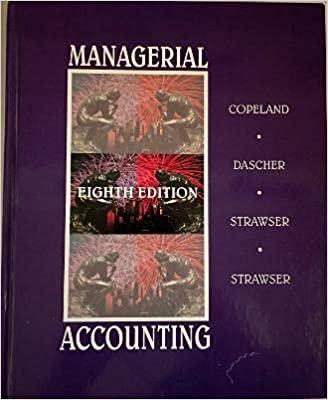Translate News Static Budget versus Flexible Budget The production supervisor of the Machining Department for Niland Company agreed to the following monthly static budget for the upcoming year: Niland Company Machining Department Monthly Production Budget Wages $215,000 Utilities 15,000 Depreciation 25,000 Total $255,000 The actual amount spent and the actual units produced in the first three months in the Machining Department were as follows: Amount Spent Units Produced January $241,000 52,000 February 233,000 48,000 March 222,000 43,000 The Machining Department supervisor has been very pleased with this performance because actual expenditures for January-March have been less than the monthly static budget of $255,000. However, the plant manager believes that the budget should not remain fixed for every month but should "flex" or adjust to the volume of work that is produced in the Machining Department. Additional budget information for the Machining Department is as follows: Wages per hour $19.00 Check My Work Previous Next eBook Show Me How Caloulator work uno SMONDL8E3UP amdaa.bL unn P.oLnonumOuL3innainIOnInOM3uauuadaa.5un RLUna Wages per hour $19.00 Utility cost per direct labor hour $1.30 Direct labor hours per unit 0.20 Planned monthly unit production 57,000 a. Prepare a flexible budget for the actual units produced for January, February, and March in the Machining Department. Assume that depreciation is a fixed cost: Enter all amounts as positive numbers. 1If required, use per unit amounts carried out to two decimal places Niland Company-Machining Department Flexible Production Budget For the Three Months Ending March 31 January February March Units of production Wages Utilities Depreciation Total b. Compare the flexible budget with the actual expenditures for the first three months. January February March Total flexible budget b. Compare the flexible budget with the actual expenditures for the first three months. > January February March Total flexible budget Actual cost Excess of actual cost over budget What does this comparison suggest? The Machining Department has performed better than originally thought. The department is spending more than would be expected









